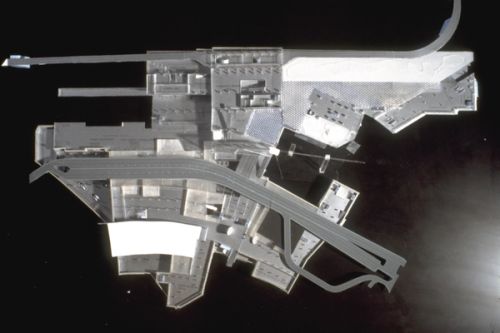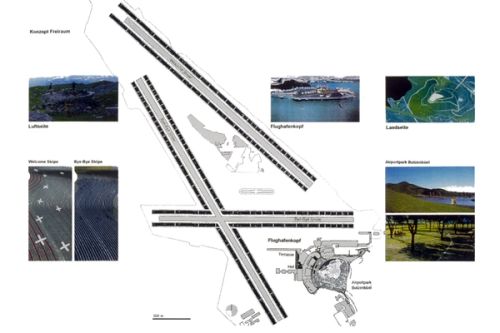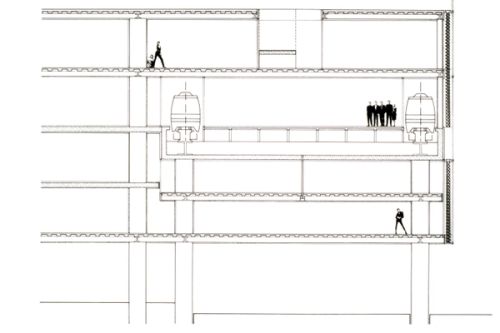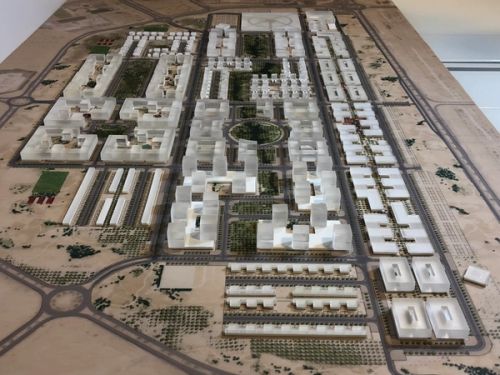
Airport 2000
At the brink of the 21st century, an increasing number of building typologies and building programs – from office building to airport, mostly generated in the 20th century – will never achieve the programmatic stability needed to produce architecture in the classical sense of the word: a fixed condition that embodies an ideal that is there to last. From a static state these activities are forced into a dynamic condition. They no longer can claim to be definitive; at the most they can claim to be efficient. Like in a movie, where movement is suggested by a sequence of frames, each a minimal mutation from the previous one, these activities have become sequences of relentless progress. Programmatically no longer stable, the buildings became a record of continuous change.
For these programs it could even be argued that 'the new' is counterproductive. Like a blank film, it produces erasure: it undoes learning and experience, abhors compromise, rejects improvisation, and resists experiment. In the name of certainty and perfection, it promotes only sterility and aberration. In logistics the imposition on ongoing operations of 'the new' may complicate rather than facilitate.
It is a paradox of our time that the most crucial enterprises are the ones subject to the greatest fluctuations, uncertainties and contestations. The airport presents a set of variables that may be optimised in multiple ways; it combines global and local, infrastructure, politics, technology, economy and ecology. That complexity and the attendant vulnerability to change prevent forever an 'ideal' manifestation, configuration or embodiment.
As a response, architecture in the 20th century has been desperate to capture 'process', to undo its fundamental association with fixity. But always, because the most knowing extrapolation is eventually derailed by the unexpected, the anticipated permutations and flexibilities that are incorporated later turn into obstacles that systematically frustrate the unfolding of actual events. Perhaps only a paroxysm of the pragmatic, a fanatical fixation on the “now,” on the most concrete and actual conditions, can avoid the futility of forward-looking strategies, whose failure is prefigured by the glaring imperfections of the present.
Maybe only an architecture that narrows its ambitions, that strictly accommodates, enables, and facilitates, and that abandons all claims to also serve the future, can generate the truly new, or can establish a new operational efficiency: something that has been completely lacking, to our increasing despair and consternation.
Each major airport is a conglomerate of architectures that are each, to a different degree, outmoded, on their way to obsolescence. Each new addition introduces inequality and accelerates the redundancy of all previous entities. Because airports are – so far – organisms in a permanent state of expansion, seemingly needing more and more space, the critical connection between expansion and contraction, between addition and subtraction – life and death – is lost.
The competition brief called for a very substantial increase of capacity in passenger traffic and cargo handling, with strong economic constraints. Our concept was based on a reinterpretation of the actual cluster of buildings:
1. At its most basic level the issue of the competition is the connection between airside and landside.
2. In a concentric condition, the most efficient short cut is the radial.
Our scheme is based on these two observations. Two relatively minor interventions – the reorganization of the delivery and the reconfiguration of the access road – allow the development of a sequence of free, unused or liberated places in the existing conglomeration, that establish a direct link between the two opposite poles of the project at the most appropriate point: between the two existing terminals.
This operation – a careful form of tunneling through existing buildings – allows us to develop an architectural project that almost completely disregards aesthetics and formalism to focus on efficiency and pure state. By eliminating the distinction between served and serving spaces, it organizes a continuous flow – a cascade – of circulation that in itself accommodates and discharges all the processing that has to take place at an airport. This consolidation of a sequence of residual spaces and found architectural objects allows – in what seems an accumulation of events – the unexpected approximation of the ideal diagram.































